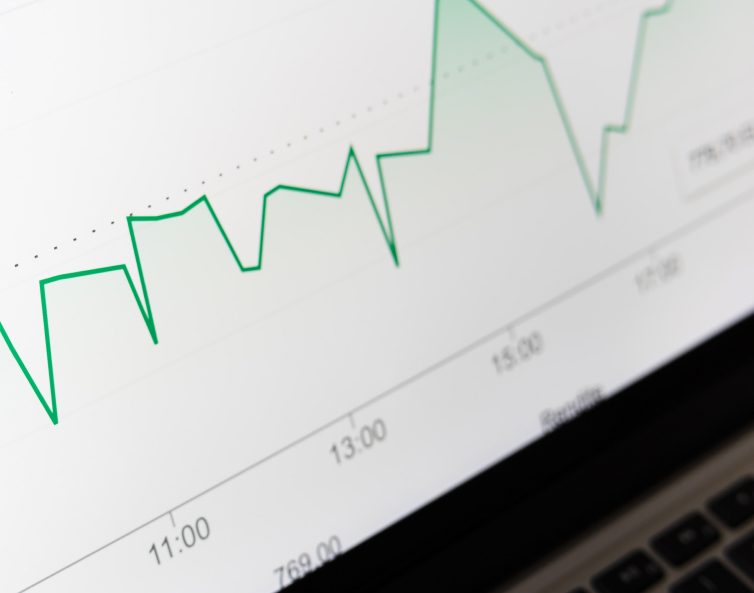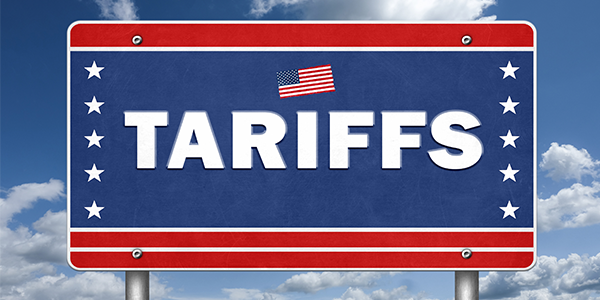

Net Asset Value as
of 04/17/2025:
Our Mutual Funds
Explore our no-load mutual funds, ranging from natural resources, emerging markets, and infrastructure, to precious metals and bond funds. We believe that we are specially qualified to be an integral part of your investment strategy.
Net Asset Values
| (NAV) As of 04/17/2025 | |||||
|---|---|---|---|---|---|
| Fund | Symbol | Close | Previous | Change | YTD |
| Global Luxury Goods Fund (USLUX) | USLUX | 18.95 | 18.82 |
0.13
|
-5.11%
|
| Gold and Precious Metals Fund (USERX) | USERX | 16.50 | 16.76 |
-0.26
|
44.99%
|
| World Precious Minerals Fund (UNWPX) | UNWPX | 1.92 | 1.96 |
-0.04
|
29.73%
|
| Global Resources Fund (PSPFX) | PSPFX | 3.74 | 3.75 |
-0.01
|
2.19%
|
| Near-Term Tax Free Fund (NEARX) | NEARX | 2.09 | 2.09 |
0.00
|
0.59%
|
| U.S. Government Securities Ultra-Short Bond Fund (UGSDX) | UGSDX | 1.95 | 1.95 |
0.00
|
1.04%
|
Occasionally one or more of the above prices may be different than those reported elsewhere. With our global investments and the early deadline imposed by reporting services, occasionally a price is provided to the services before it has been fully verified. The prices above are always the most current and accurate available.
Past performance does not guarantee future results. Current performance may be higher or lower than the performance data quoted. The principal value and investment return of an investment will fluctuate so that your shares, when redeemed, may be worth more or less than their original cost.
Annualized Monthly Yields as of 03/31/2025
| Bond Funds | Inception Date | 30 Day SEC | Tax Equivalent (40.8% Tax Rate) | SEC Yield W/O Waivers |
|---|---|---|---|---|
| Near-Term Tax Free Fund (NEARX) | 12/04/1990 | 2.53% | 4.28% | 1.54% |
| U.S. Government Securities Ultra-Short Bond Fund (UGSDX) | 11/01/1990 | 3.89% | N/A | 3.08% |
Occasionally one or more of the above prices may be different than those reported elsewhere. With our global investments and the early deadline imposed by reporting services, occasionally a price is provided to the services before it has been fully verified. The prices above are always the most current and accurate available.
Performance data quoted above is historical. Past performance does not guarantee future results. Current performance may be higher or lower than the performance data quoted. The principal value and investment return of an investment will fluctuate so that your shares, when redeemed, may be worth more or less than their original cost.
Quarterly Yields as of 03/31/2025
| Bond Funds | Inception Date | 30-day SEC | Tax Equivalent (40.8% Tax Rate) | SEC Yield w/o Waiver & Reimbursement | Maturity |
|---|---|---|---|---|---|
| Near-Term Tax Free Fund NEARX | 12/04/1990 | 2.53% | 4.28% | 1.54% | 1.05 |
| U.S. Government Securities Ultra-Short Bond Fund (UGSDX) | 11/01/1990 | 3.89% | N/A | 3.08% | 0.24 |
Occasionally one or more of the above prices may be different than those reported elsewhere. With our global investments and the early deadline imposed by reporting services, occasionally a price is provided to the services before it has been fully verified. The prices above are always the most current and accurate available.
Performance data quoted above is historical. Past performance does not guarantee future results. Current performance may be higher or lower than the performance data quoted. The principal value and investment return of an investment will fluctuate so that your shares, when redeemed, may be worth more or less than their original cost.
Annualized Quarterly Returns as of 03/31/2025
| Fund | Inception Date | YTD | 1 Year | 5 Year | 10 Year | Since Inception | Gross Expense Ratio |
|---|---|---|---|---|---|---|---|
| U.S. Global Luxury Goods Fund (USLUX) | 10/17/1994 | -2.70% | 1.76% | 16.50% | 7.47% | 8.13% | 2.05% |
| Gold and Precious Metals Fund (USERX) | 7/1/1974 | 33.22% | 49.65% | 18.50% | 12.19% | 1.46% | 1.48% |
| World Precious Minerals Fund (UNWPX) | 11/27/1985 | 22.30% | 27.46% | 8.70% | 2.70% | 2.16% | 1.74% |
| Global Resources Fund (PSPFX) | 8/3/1983 | 2.46% | -1.36% | 13.79% | 1.27% | 3.06% | 1.69% |
| Near-Term Tax Free Fund (NEARX) | 11/1/1990 | 1.07% | 2.96% | 0.56% | 0.78% | 3.17% | 1.29% |
| U.S. Government Securities Ultra-Short Bond Fund (UGSDX) | 12/4/1990 | 1.04% | 4.32% | 1.47% | 1.12% | 2.44% | 1.17% |
Expense ratios as stated in the most recent prospectus.
The Adviser of the Gold & Precious Metals Fund has contractually limited total fund operating expenses (exclusive of acquired fund fees and expenses of, extraordinary expenses, taxes, brokerage commissions and interest, and advisory fee performance adjustments to not exceed 1.75% on an annualized basis through April 30, 2025. Total annual expenses after reimbursement of (0.02%) were 1.46%.
The Adviser of the Global Luxury Goods Fund has contractually limited total fund operating expenses (exclusive of acquired fund fees and expenses of extraordinary expenses, taxes, brokerage commissions and interest, and advisory fee performance adjustments to not exceed 1.75% on an annualized basis through April 30, 2025. Total annual expenses after reimbursement of (0.18%) were 1.87%.
The Adviser of the World Precious Minerals Fund has contractually limited total fund operating expenses (exclusive of acquired fund fees and expenses of extraordinary expenses, taxes, brokerage commissions and interest, and advisory fee performance adjustments) to not exceed 1.75% on an annualized basis through April 30, 2025. Total annual expenses after waiver or reimbursement of (0.27%) were 1.47%.
The Adviser of the Near-Term Tax Free Fund has contractually limited the total fund operating expenses (exclusive of acquired fund fees and expenses extraordinary expenses, taxes, brokerage commissions and interest) to not exceed 0.45% on an annualized basis through April 30, 2025. Total annual expenses after the waiver of (0.84%) were 0.45%. The fund’s yield calculation is based on the holdings’ yield to maturity for prior 30 days; distribution may differ.
The Adviser of the U.S. Government Securities Ultra-Short Bond Fund has voluntarily limited total fund operating expenses (exclusive of acquired fund fees and expenses, extraordinary expenses, taxes, brokerage commissions and interest) to not exceed 0.45%. With the voluntary expense waiver amount of (0.72%), total annual expenses after reimbursement were 0.45%. U.S. Global Investors, Inc. can modify or terminate the voluntary limit at any time, which may lower a fund’s yield or return. The fund’s yield calculation is based on the holdings’ yield to maturity for prior 30 days; distribution may differ.
The Adviser of the Global Resources Fund has contractually limited total fund operating expenses (exclusive of acquired fund fees and expenses of extraordinary expenses, taxes, brokerage commissions and interest, and advisory fee performance adjustments) to not exceed 1.75%. Total annual expenses after reimbursement of (0.22%) were 1.47%.
U.S. Global Investors, Inc. can modify or terminate the voluntary limits at any time, which may lower a fund’s yield or return.
Performance data quoted above is historical. Past performance is no guarantee of future results. Results reflect the reinvestment of dividends and other earnings. For a portion of periods, the fund had expense limitations, without which returns would have been lower. Current performance may be higher or lower than the performance data quoted. The principal value and investment return of an investment will fluctuate so that your shares, when redeemed, may be worth more or less than their original cost. Performance does not include the effect of any direct fees described in the fund’s prospectus which, if applicable, would lower your total returns. Performance quoted for periods of one year or less is cumulative and not annualized. Obtain performance data current to the most recent month-end at www.usfunds.com or 1-800-US-FUNDS. High double-digit returns are attributable, in part, to unusually favorable market conditions and may not be repeated or consistently achieved in the future.
Month End Average Annual Total Returns as of 03/31/2025
| Fund | Inception Date | One Month Return | YTD | 1 Year | 5 Year | 10 Year | Since Inception | Gross Expense Ratio |
|---|---|---|---|---|---|---|---|---|
| USGI Global Luxury Goods Fund (USLUX) | 10/17/1994 | -7.56% | -2.70% | 1.76% | 16.50% | 7.47% | 8.13% | 2.05% |
| Global Resources Fund (PSPFX) | 8/3/1983 | 3.59% | 2.46% | -1.36% | 13.79% | 1.27% | 3.06% | 1.69% |
| Gold and Precious Metals Fund (USERX) | 7/1/1974 | 16.89% | 33.22% | 49.65% | 18.50% | 12.19% | 1.46% | 1.48% |
| Near-Term Tax Free Fund (NEARX) | 12/4/1990 | 0.21% | 1.07% | 2.96% | 0.56% | 0.78% | 3.17% | 1.29% |
| U.S. Government Securities Ultra-Short Bond Fund (UGSDX) | 11/1/1990 | 0.35% | 1.04% | 4.32% | 1.47% | 1.12% | 2.44% | 1.17% |
| World Precious Minerals Fund (UNWPX) | 11/27/1985 | 10.37% | 22.30% | 27.46% | 8.70% | 2.70% | 2.16% | 1.74% |
Expense ratios as stated in the most recent prospectus.
The Adviser of the Gold & Precious Metals Fund has contractually limited total fund operating expenses (exclusive of acquired fund fees and expenses of, extraordinary expenses, taxes, brokerage commissions and interest, and advisory fee performance adjustments to not exceed 1.75% on an annualized basis through April 30, 2025. Total annual expenses after reimbursement of (0.02%) were 1.46%.
The Adviser of the Global Luxury Goods Fund has contractually limited total fund operating expenses (exclusive of acquired fund fees and expenses of extraordinary expenses, taxes, brokerage commissions and interest, and advisory fee performance adjustments to not exceed 1.75% on an annualized basis through April 30, 2025. Total annual expenses after reimbursement of (0.18%) were 1.87%.
The Adviser of the World Precious Minerals Fund has contractually limited total fund operating expenses (exclusive of acquired fund fees and expenses of extraordinary expenses, taxes, brokerage commissions and interest, and advisory fee performance adjustments) to not exceed 1.75% on an annualized basis through April 30, 2025. Total annual expenses after waiver or reimbursement of (0.27%) were 1.47%.
The Adviser of the Near-Term Tax Free Fund has contractually limited the total fund operating expenses (exclusive of acquired fund fees and expenses extraordinary expenses, taxes, brokerage commissions and interest) to not exceed 0.45% on an annualized basis through April 30, 2025. Total annual expenses after the waiver of (0.84%) were 0.45%. The fund’s yield calculation is based on the holdings’ yield to maturity for prior 30 days; distribution may differ.
The Adviser of the U.S. Government Securities Ultra-Short Bond Fund has voluntarily limited total fund operating expenses (exclusive of acquired fund fees and expenses, extraordinary expenses, taxes, brokerage commissions and interest) to not exceed 0.45%. With the voluntary expense waiver amount of (0.72%), total annual expenses after reimbursement were 0.45%. U.S. Global Investors, Inc. can modify or terminate the voluntary limit at any time, which may lower a fund’s yield or return. The fund’s yield calculation is based on the holdings’ yield to maturity for prior 30 days; distribution may differ.
The Adviser of the Global Resources Fund has contractually limited total fund operating expenses (exclusive of acquired fund fees and expenses of extraordinary expenses, taxes, brokerage commissions and interest, and advisory fee performance adjustments) to not exceed 1.75%. Total annual expenses after reimbursement of (0.22%) were 1.47%.
U.S. Global Investors, Inc. can modify or terminate the voluntary limits at any time, which may lower a fund’s yield or return.
Performance data quoted above is historical. Past performance is no guarantee of future results. Results reflect the reinvestment of dividends and other earnings. For a portion of periods, the fund had expense limitations, without which returns would have been lower. Current performance may be higher or lower than the performance data quoted. The principal value and investment return of an investment will fluctuate so that your shares, when redeemed, may be worth more or less than their original cost. Performance does not include the effect of any direct fees described in the fund’s prospectus which, if applicable, would lower your total returns. Performance quoted for periods of one year or less is cumulative and not annualized. Obtain performance data current to the most recent month-end at www.usfunds.com or 1-800-US-FUNDS. High double-digit returns are attributable, in part, to unusually favorable market conditions and may not be repeated or consistently achieved in the future.
| Fund | Date | Dividend/Distribution Per Share | Reinvest Price Per Share |
|---|---|---|---|
| Near-Term Tax Free Fund | 03/31/25 | $ 0.004313 | $2.10 |
| U.S. Government Securities Ultra-Short Bond Fund | 03/31/25 | $ 0.006793 | $1.95 |
The Fund’s closing Net Asset Value (NAV) on the ex-dividend date will be reduced by the amount of the distribution. There is no guarantee that the fund will continue to distribute income.
Past performance does not guarantee future results. Current performance may be higher or lower than the performance data quoted. The principal value and investment return of an investment will fluctuate so that your shares, when redeemed, may be worth more or less than their original cost.
Global Luxury Goods Fund (USLUX)
Fact SheetHow to Invest Request Info Download Prospectus
About The Global Luxury Goods Fund
The Global Luxury Goods Fund provides investors access to companies around the world that are involved in the design, manufacture and sale of products and services that are not considered to be essential but are highly desired within a culture or society.
Investments in luxury goods companies may expose the fund to consumer discretionary industries. These include but are not limited to apparel, automotive, home and office products, leisure products, recreation facilities, retail discretionary, travel and more.
Fund Objective
The Global Luxury Goods Fund’s primary objective is to seek long-term capital appreciation.
Fund Strategy
Under normal market conditions, the Global Luxury Goods Fund will invest at least 80 percent of its net assets in securities of companies producing, processing, distributing, and manufacturing luxury products, services or equipment. The securities in which the fund may invest include common stocks, preferred stocks, convertible securities, rights and warrants, exchange-traded funds (“ETFs”) that represent interests in, or related to, luxury goods companies, and depository receipts (American Depository Receipts (ADRs) and Global Depository Receipts (GDRs).
The fund’s benchmark is the S&P Composite 1500 Index.
The fund changed its name and investment strategy on May 1, 2020, and prior to that date, the performance shown reflects the strategy of the Holmes Macro Trends Fund (MEGAX). Prior to May 1, 2020, the fund invested in a diversified portfolio of equity and equity-related securities of companies in the S&P Composite 1500 Index, with a focus on companies achieving high return on invested capital metrics and an emphasis on mid-capitalization companies. Different investment strategies may lead to different performance results.
The S&P Global Luxury Index is comprised of 80 of the largest publicly-traded companies engaged in the production or distribution of luxury goods or the provision of luxury services that meet specific investibility requirements.
Companies in the consumer discretionary sector are subject to risks associated with fluctuations in the performance of domestic and international economies, interest rate changes, increased competition and consumer confidence. The performance of such companies may also be affected by factors relating to levels of disposable household income, reduced consumer spending, changing demographics and consumer tastes, among others.
For the 12 months ending December 31, 2024, the Global Luxury Goods Fund (USLUX) posted a gain of 14.22 percent, trailing its benchmarks. The S&P Composite 1500 rose by 23.95 percent, while the regulatory benchmark, the S&P 500 Index, increased by 25.02 percent. However, the Global Luxury Goods Fund (USLUX) outperformed the S&P Global Luxury Index by 15.32 percent; the Luxury Index focuses on high-end products and services and has an investment objective more closely aligned with the fund’s strategy. Additionally, in the fourth quarter, the fund outperformed the S&P Global Luxury Index by 3.57 percent.
Strengths
- The fund’s stock selection within the financial sector had the greatest positive impact on performance relative to the S&P 1500 Index. The overweight positions in KKR and Goldman Sachs Group proved to be the most effective strategy. KKR, a global investment firm known for its private equity and real estate ventures, saw its shares rise by 79.64 percent. Goldman Sachs, a leading global investment bank and financial services company, experienced a 51.51 percent surge. The strong U.S. economy and the outcome of the presidential elections provided a favorable environment for financial companies.
- The fund’s lack of investments in the health care sector had the second positive impact on its performance relative to the S&P 1500 Index. While health care equities posted positive returns, the decision to avoid this sector proved beneficial, as other sectors delivered stronger performance. Health care stocks gained just 1.22 percent over the year, significantly underperforming the broad S&P 1500 Index, which returned 23.72 percent.
- A key contributor to the fund’s performance was Tesla, an American multinational automotive and clean energy company. Tesla’s shares soared by 62.5 percent over the past year, driven by Elon Musk’s endorsement of Donald Trump ahead of the U.S. presidential elections and the company’s announcement of several initiatives aimed at boosting car deliveries. However, Tesla faced a setback, as it delivered fewer vehicles in the fourth quarter of 2024 and reported its first annual sales decline in over a decade.
Weaknesses
- The fund’s stock selection in the consumer discretionary sector had the biggest negative impact on its performance relative to the S&P 1500 Index. While the index allocated about 10 percent of its assets to consumer discretionary, the fund concentrated a larger portion of its assets in this sector, focusing on upscale consumer goods and services. This overweight position in the luxury sector hurt performance, as many luxury stocks corrected. Shares of Lululemon fell by 25.02 percent, LVMH declined by 18.03 percent and both BMW and Volkswagen dropped 21.80 percent.
- The fund’s stock selection in the consumer staples sector had the second-largest negative impact on its performance compared to the S&P 1500 Index. Like the consumer discretionary sector, the fund was overweight in luxury-oriented names within consumer staples, which underperformed. Notable declines included Kering, known for its Gucci brand, which dropped 41.99 percent; Remy, which decreased by 50.8 percent; Estee Lauder, which plummeted 47.32 percent; and Coty, which declined 43.69 percent.
- A significant detractor from the fund’s performance was Lululemon, a leading global athletic apparel retailer. The company’s shares dropped by 25.02 percent last year. On March 22, the stock plummeted 15 percent at the open, marking its largest single-day drop since 2020. This sharp decline followed the company’s disappointing guidance, attributed to weaker demand for upscale sportswear in North America.
Current Outlook
Opportunities
- According to LUXONOMY Report, the global luxury market is expected to continue growing around 5-6 percent annually until 2030. Asia-Pacific, driven mainly by China and India, will be the region with the greatest expansion, projected to account for 55 percent of the global luxury market by 2030. Europe and North America will remain important markets, though with more moderate growth.
- Within the luxury industry, experiential luxury, which includes tourism, wellness and fine dining, is expected to grow faster than luxury goods as people prioritize experiences over material purchases. By the end of the decade, it is estimated to account for 35 percent of the market. According to Grand View Research, the global luxury travel market was valued at $1.38 trillion in 2023 and is projected to grow at an annual rate of 7.9 percent from 2024 to 2030.
- In the third quarter of 2024, U.S. household wealth reached a record high, driven by a stock market rally ahead of the presidential elections. Household net worth increased to $168.8 trillion, with the value of Americans’ equity holdings rising by $3.89 trillion, while real estate values declined by nearly $200 billion. This wealth growth is expected to further boost economic growth and consumer spending.
Threats
- UBS predicts global growth will slow over the next two years, dropping from 3.2 percent to 2.6 percent, driven by a slowdown in the United States and the impact of new tariffs on an already struggling China. According to UBS economists, a 60 percent tariff could initially reduce China’s GDP growth by 2.5 percent. Countries like Mexico, Korea and Taiwan are expected to be hit harder than Europe. For Europe, additional taxes on luxury goods, spirits and high-end autos may be imposed by President Trump, further affecting the region.
- In the luxury sector, China’s role is expected to be pivotal, largely influenced by the government’s ability to implement the announced stimulus measures effectively and introduce additional policies if needed. The country’s property sector faces significant challenges, which could impact consumer spending and confidence. Furthermore, while domestic tourism has shown a strong recovery, international travel has yet to return to pre-pandemic levels, limiting the overall rebound in tourism-related luxury spending. The effectiveness of China’s economic strategies will be crucial in shaping the growth trajectory of the global luxury market.
- There are high expectations for the incoming administration in the U.S., particularly regarding its ability to address global geopolitical tensions. Key questions remain unanswered: How will the war in Europe conclude, and when? Will peace be achieved in the Middle East? Could China take steps toward a potential conflict over Taiwan? Furthermore, many wonder if Trump will fulfill his campaign promises to end ongoing war in Europe. The administration’s actions during its initial months in office will be critical in shaping the global political landscape for years to come.
Top 10 Equity and Debt Holdings as of 03-31-2025
| Holding | Percentage |
|---|---|
| Hermes International | 8.01% |
| Ferrari NV | 5.79% |
| Mercedes-Benz Group AG | 4.28% |
| Tesla, Inc. | 4.02% |
| LVMH Moet Hennessy Louis Vuitton SE | 3.99% |
| Volkswagen AG | 3.85% |
| Cie Financiere Richemont SA | 3.84% |
| adidas AG | 3.45% |
| The Goldman Sachs Group, Inc. | 3.22% |
| Carnival Corp. | 3.00% |
Industry Breakdown as of 03-31-2025
| Sector | Percentage |
|---|---|
| Consumer Discretionary | 52.70% |
| Consumer Staples | 14.37% |
| Financial | 13.10% |
| Materials | 11.86% |
| Cash Equivalents | 3.81% |
| Information Technology | 2.59% |
| Communication Services | 1.50% |
| Energy | 0.07% |
Regional Breakdown as of 03-31-2025
| Region | Percentage |
|---|---|
| United States | 36.47% |
| France | 17.57% |
| Germany | 14.18% |
| Italy | 8.17% |
| Canada | 8.04% |
| Switzerland | 4.35% |
| Other | 11.22% |
Growth of $10,000 Over 10 Years as of 03/31/2025
The chart illustrates the performance of a hypothetical $10,000 investment made in the fund during the depicted time frame. Figures include reinvestment of capital gains and dividends, but the performance does not include the effect of any direct fees described in the fund’s prospectus (e.g., short-term trading fees) which, if applicable, would lower your total returns.
Month End Average Annual Total Returns as of 03/31/2025
| YTD | 1 Year | 5 Year | 10 Year | Since Inception | Gross Expense Ratio |
| -2.70% | 1.76% | 16.50% | 7.47% | 8.13% | 2.05% |
Quarter End Average Annual Total Returns as of 03/31/2025
| YTD | 1 Year | 5 Year | 10 Year | Since Inception | Gross Expense Ratio |
| -2.70% | 1.76% | 16.50% | 7.47% | 8.13% | 2.05% |
Expense ratio as stated in the most recent prospectus.
The Adviser of the Global Luxury Goods Fund has contractually limited total fund operating expenses (exclusive of acquired fund fees and expenses of extraordinary expenses, taxes, brokerage commissions and interest, and advisory fee performance adjustments to not exceed 1.75% on an annualized basis through April 30, 2025. Total annual expenses after reimbursement of (0.18%) were 1.87%.
U.S. Global Investors, Inc. can modify or terminate the voluntary limits at any time, which may lower a fund’s yield or return.
Performance data quoted above is historical. Past performance is no guarantee of future results. Results reflect the reinvestment of dividends and other earnings. For a portion of periods, the fund had expense limitations, without which returns would have been lower. Current performance may be higher or lower than the performance data quoted. The principal value and investment return of an investment will fluctuate so that your shares, when redeemed, may be worth more or less than their original cost. Performance does not include the effect of any direct fees described in the fund’s prospectus which, if applicable, would lower your total returns. Performance quoted for periods of one year or less is cumulative and not annualized. Obtain performance data current to the most recent month-end at www.usfunds.com or 1-800-US-FUNDS. High double-digit returns are attributable, in part, to unusually favorable market conditions and may not be repeated or consistently achieved in the future.
Gold and Precious Metals Fund (USERX)
Fact SheetHow to Invest Request Info Download Prospectus
About the Gold and Precious Metals Fund
The Gold and Precious Metals Fund is the first no-load gold fund in the U.S. We have a history as pioneers in portfolio management in this specialized sector. Our team brings valuable background in geology and mining finance, important to understanding the technical side of the business. The fund focuses on producers, companies currently pulling gold or other precious minerals out of the ground. These companies, often called “seniors,” generally have the largest market caps in the mining sector.
Fund Objective
The Gold and Precious Metals Fund seeks capital appreciation while protecting against inflation and monetary instability. The fund also pursues current income as a secondary objective.
Fund Strategy
Under normal market conditions, the Gold and Precious Metals Fund will invest at least 80 percent of its net assets in equity securities of companies predominately involved in the mining, fabrication, processing, marketing, or distribution of metals including gold, silver, platinum group, palladium and diamonds. Gold companies include mining companies that exploit gold deposits that are supported by by-products and co-products such as copper, silver, lead and zinc, and also have diversified mining companies which produce a meaningful amount of gold. The fund focuses on selecting companies with established producing mines. The fund’s benchmark is the FTSE Gold Mines Index. Read more about U.S. Global Investors’ investment process.
The FTSE Gold Mines Index Series encompasses all gold mining companies that have a sustainable and attributable gold production of at least 300,000 ounces a year, and that derive 75% or more of their revenue from mined gold.
The Gold and Precious Metals Fund rose 16.76 percent in 2024, underperforming its broad-based benchmark, the S&P 500 Index, which gained 25.02 percent. Relative to the FTSE Gold Mines Index, which returned 8.97 percent, we outperformed. For the fourth quarter, gold bullion declined 0.38 percent, while the Gold and Precious Metals Fund declined 13.24 percent, underperforming its broad-based benchmark, the S&P 500 Index, which gained 2.41 percent. However, relative to the FTSE Gold Mines Index, which declined 16.51 percent, we outperformed.
The fund employed a defensive investment position from time to time in 2024, with higher-than-average cash balances on hand to protect its liquidity. However, to maintain varying degrees of investment exposure to the gold market, the fund utilized call option positions and directional ETFs, which are more liquid than options, to hedge the fund’s benchmark risks and provide optionality to upswings in gold stocks.
Strengths
- Being underweight Barrick Gold, the second-largest member of the FTSE Gold Mines Index, was our best call on relative performance, as it significantly underperformed its index peers.
- Being underweight Newmont, the largest member of the FTSE Gold Mines Index, was our second-best call on relative performance, as it significantly underperformed its index peers. Newmont’s acquisition of Newcrest Mining created the world’s largest gold mining company, with significant copper exposure. Copper gained only 1.76 percent in 2024.
- Owning Catalyst Metals, which acquired the assets of Superior Gold in 2023, resulted in a remarkable turnaround, with the stock gaining 190.81 percent for the year and becoming the third-largest dollar contributor to the fund’s performance.
Weaknesses
- Being underweight Agnico Eagle Mines, a somewhat expensive but solid company with a strong corporate culture, was our largest missed opportunity.
- Being underweight Kinross Gold Corp., an expensive company relative to its underlying assets compared to its peers, was our second-largest missed opportunity, as it has delivered steady production results and, most importantly, no misses on guidance.
- The third-largest drag on relative performance was our uninvested cash in the fund, maintained to manage liquidity.
Opportunities
- Gold prices climbed for a second year in 2024 largely due to central bank buying led by China and geopolitical instability in the Ukraine and the Middle East. Finally, investment demand for owning gold through the various exchange listed ETFs saw a turn to positive flows in 2024. The key question for continuation is whether these drivers persist. Central bank buying and geopolitical concerns appear likely to continue. Supply constraints will remain a structural issue too with gold producers facing an uphill battle in growing industry-wide production.
- Silver has lagged gold over the last two years, yet the market has been in a 200-million-ounce deficit for several years now with the growing photovoltaic demand. Silver is primarily mined a byproduct from the processing of gold but lead and zinc mines are also significant. With relatively few options to expand silver production directly, this could be a catalyst for higher prices, as traditionally silver tends to rally higher when generalists enter the market for precious metals exposure.
- With the rising gold price, fast money and some generalists have begun to buy gold stocks outside of the specialist funds focused on precious metals. This is because we are finally seeing margin expansion because the revenue growth per share has been rising over the past five quarters. With higher gold and silver prices in 2025, we could see generalist investors return to buying gold stocks which are undervalued.
Threats
- Recently, both the value of the dollar and the price of gold have been positively correlated with both financial assets increasing in value. This has largely been attributed to currently armed geopolitical risks but going into 2025 there is a push to end the war in Ukraine while Israel is likely closer to winding down the worst of fighting in Gaza. A solution to these conflicts could cool investor demand for gold relative to the dollar.
- A change in Federal Reserve policy could be a headwind to gold. Should the Fed take a more aggressive stance towards inflation, leading to further interest rate hikes, and this could trigger a rotation back into the dollar.
- If global economies show strong signs of recovery and inflation is brought under control, investors may become less concerned about economic uncertainty and inflation risks. This could lead to a decrease in demand for precious metals.
The FTSE Gold Mines Index encompasses all gold mining companies that have a sustainable and attributable gold production of at least 300,000 ounces a year, and that derive 75 percent or more of their revenue from mined gold. The S&P 500 is a market-capitalization-weighted stock market index that tracks the stock performance of about 500 of some of the largest U.S. public companies.
Fund portfolios are actively managed, and holdings may change daily. Holdings are reported as of the most recent quarter-end. Holdings in the Gold and Precious Metals Fund as a percentage of net assets as of December 31, 2024: Barrick Gold Corp. (0.00 percent), Newmont Corp. (0.00 percent), Newcrest Mining Limited (0.00 percent), Catalyst Metals Ltd. (3.07 percent), Superior Gold Inc. (0.00 percent), Agnico Eagle Mines Ltd. (2.27 percent), Kinross Gold Corp. (1.78 percent).
Top 10 Equity Holdings as of 03-31-2025
| Holding | Percentage |
|---|---|
| K92 Mining, Inc. | 9.56% |
| Alamos Gold, Inc. | 5.14% |
| Catalyst Metals, Ltd. | 4.04% |
| Mineros SA | 4.02% |
| Torex Gold Resources, Inc. | 3.68% |
| Aya Gold & Silver, Inc. | 3.59% |
| Vox Royalty Corp. | 3.05% |
| Aris Gold Corp. | 2.92% |
| Westgold Resources, Ltd. | 2.68% |
| Agnico Eagle Mines, Ltd. | 2.40% |
Industry Breakdown as of 03-31-2025
| Sector | Percentage |
|---|---|
| Gold, Precious Metals and Minerals | 92.61% |
| Cash Equivalents | 6.63% |
| Other | 0.76% |
Regional Breakdown as of 03-31-2025
| Region | Percentage |
|---|---|
| Canada | 57.06% |
| Australia | 16.79% |
| United States | 8.28% |
| South Africa | 4.48% |
| Other | 6.76% |
| Cash Equivalents | 6.63% |
Growth of $10,000 Over 10 Years as of 03/31/2025
The chart illustrates the performance of a hypothetical $10,000 investment made in the fund during the depicted time frame. Figures include reinvestment of capital gains and dividends, but the performance does not include the effect of any direct fees described in the fund’s prospectus (e.g., short-term trading fees) which, if applicable, would lower your total returns.
Month End Average Annual Total Returns as of 03/31/2025
| YTD | 1 Year | 5 Year | 10 Year | Since Inception | Gross Expense Ratio |
| 33.22% | 49.65% | 18.50% | 12.19% | 1.46% | 1.48% |
Quarter End Average Annual Total Returns as of 03/31/2025
| YTD | 1 Year | 5 Year | 10 Year | Since Inception | Gross Expense Ratio |
| 33.22% | 49.65% | 18.50% | 12.19% | 1.46% | 1.48% |
Expense ratio as stated in the most recent prospectus.
The Adviser of the Gold & Precious Metals Fund has contractually limited total fund operating expenses (exclusive of acquired fund fees and expenses of, extraordinary expenses, taxes, brokerage commissions and interest, and advisory fee performance adjustments to not exceed 1.75% on an annualized basis through April 30, 2025. Total annual expenses after reimbursement of (0.02%) were 1.46%.
Performance data quoted above is historical. Past performance is no guarantee of future results. Results reflect the reinvestment of dividends and other earnings. For a portion of periods, the fund had expense limitations, without which returns would have been lower. Current performance may be higher or lower than the performance data quoted. The principal value and investment return of an investment will fluctuate so that your shares, when redeemed, may be worth more or less than their original cost. Performance does not include the effect of any direct fees described in the fund’s prospectus which, if applicable, would lower your total returns. Performance quoted for periods of one year or less is cumulative and not annualized. Obtain performance data current to the most recent month-end at www.usfunds.com or 1-800-US-FUNDS. High double-digit returns are attributable, in part, to unusually favorable market conditions and may not be repeated or consistently achieved in the future.
World Precious Minerals Fund (UNWPX)
Fact SheetHow to Invest Request Info Download Prospectus
About the World Precious Minerals Fund
The World Precious Minerals Fund complements our Gold and Precious Metals Fund by giving investors increased exposure to junior and intermediate mining companies for added growth potential. With a high level of expertise in this specialized sector, our portfolio management team includes professionals with experience in geology, mineral resources and mining finance.
Fund Objective
The World Precious Minerals Fund seeks long-term growth of capital while providing protection against inflation and monetary instability.
Fund Strategy
Under normal market conditions, the World Precious Minerals Fund will invest at least 80% of its net assets in common stock, preferred stock, convertible securities, rights and warrants, and depository receipts of companies principally engaged in the exploration for, or mining and processing of, precious minerals such as gold, silver, platinum group, palladium and diamonds. The fund focuses on selecting junior and intermediate exploration companies from around the world.
The fund’s benchmark is the NYSE Arca Gold Miners Index.
Read more about U.S. Global Investors’ investment process
The NYSE Arca Gold Miners Index is a modified market capitalization weighted index comprised of publicly traded companies involved primarily in the mining for gold and silver. The index benchmark value was 500.0 at the close of trading on December 20, 2002.
For the year ended December 31, 2024, the World Precious Minerals Fund gained 2.07 percent, underperforming its benchmark broad-based benchmark, the S&P 500 Index, which gained 25.02 percent. Relative to the NYSE Arca Gold Miners Index, which returned 11.09 percent, we underperformed. In addition, we outperformed the S&P/TSX Venture Precious Metals & Minerals Index, which tumbled by 19.01 percent.
For the fourth quarter, the Gold and Precious Metals Fund decreased 12.43 percent, underperforming its broad-based benchmark, the S&P 500 Index, which returned 2.41 percent. Relative to the NYSE Arca Gold Miners Total Return Index, which fell 13.86 percent, we outperformed. In addition, we outperformed the S&P TSX Venture Precious Metals & Minerals Index, which tumbled 23.44 percent in the fourth quarter.
Strengths
- First Nordic Metals was our largest dollar contributor to performance, with a 158.07 percent gain in its share price over the year. A new management team restructured the joint ownership of the Barsele project in Sweden, resulting in Agnico Eagle Mines holding a 12.6 percent stake in First Nordic, rather than at the project level. The 2024 exploration program has added new discoveries to the land package.
- Being zero-weight Newmont, the largest member of the NYSE Arca Gold Miners Index, was our second-best call on relative performance, as it significantly underperformed its index peers. Newmont pivoted to acquire the copper-rich assets of Newcrest Mining, creating the world’s largest gold mining company, but may face a drag if copper prices lag gold in 2025.
- Being zero-weight Barrick Gold, now the third-largest member of the NYSE Arca Gold Miners Index, following Agnico moving up to the second-largest position in 2024, was our third-best call on relative performance, as it significantly underperformed its index peers with double-digit losses for the year.
Weaknesses
- Nano One Materials was our biggest drag on performance due to the loss of momentum in the battery metals space. While negative sentiment has depressed the stock price, it has not altered the company’s trajectory of investment in advancing its portfolio. In September, the U.S. Department of Defense (DOD) awarded Nano One $12.9 million to further the development of North American LFP production, followed by a matching grant from the Quebec Government in December.
- Being underweight Agnico Eagle Mines, now the second-largest member of the NYSE Arca Gold Miners Index, was our second-biggest drag on relative performance, as it finished thirteenth among the best performers in the index.
- Arizona Metals had the most significant impact on performance due to position size, as it declined alongside other exploration and development companies over the year. However, the company remains well-positioned, with sufficient cash to fund its Kay Mine exploration program—initially developed by Exxon Mobil—for the next two and a half years at a $4 million per quarter burn rate, allowing it to advance the project without near-term dilution.
Opportunities
- Many junior gold companies are significantly undervalued relative to the current gold price. This creates the potential for substantial gains if and when investor sentiment shifts. Particularly, if crypto currency trading loses its upward momentum this year and speculative investors come back to the sector.
- Senior mining companies have begun to make some acquisitions in the mid-tier gold miners but have not yet advanced down to the junior miners and exploration companies that offer promising projects to replenish their reserves. If gold continues to appreciate in value, we expect more consolidation in 2025.
- In addition, some of the junior miners have projects that are only now becoming economic at the higher gold price. This provides lots of leverage to a rising gold price. Junior miners offer significant leverage to the gold price as a relatively small increase in the gold price can have a disproportionately large impact on their share prices.
Threats
- The market has been very risk adverse in the last 2 years towards the junior miners who are inherently higher-risk investments. In times of economic uncertainty, investors often gravitate towards safer assets, like established producers or physical gold.
- Funding challenges around raising capital for exploration and development can be difficult, especially in a market where investor sentiment is cautious. Rising interest rates make raising capital more expensive.
- Environmental regulations and permitting processes are becoming increasingly stringent, which can delay projects and increase costs. With the limited funding there has been a lack of new gold large discoveries, which tend to have greater certainty that they will be funded.
The NYSE Arca Gold Miners Index is a modified market capitalization weighted index comprised of publicly traded companies involved primarily in the mining for gold and silver. The S&P 500 is a market-capitalization-weighted stock market index that tracks the stock performance of about 500 of some of the largest U.S. public companies. The S&P/TSX Venture Precious Metals & Minerals Index consists of all members of the S&P/TSX Venture Composite that are classified within the GICS precious metals & minerals sub-industry. Standard deviation is a quantity calculated to indicate the extent of deviation for a group as a whole. R² (R-squared) is a statistical measure that indicates how well a regression model explains the variability of one variable in relation to another. It ranges from 0 to 1 (or 0 percent to 100 percent), where 1 (100 percent) means the model perfectly explains the relationship and 0 (0 percent) means the model explains none of the relationship.
Fund portfolios are actively managed, and holdings may change daily. Holdings are reported as of the most recent quarter-end. Holdings in the World Precious Minerals Fund as a percentage of net assets as of December 31, 2024: First Nordic Metals Corp. (3.56 percent), Agnico Eagle Mines Ltd. (0.55 percent), Newmont Corp. (0.00 percent), Newcrest Mining Limited (0.00 percent), Barrick Gold Corp. (0.00 percent), Nano One Materials Corp. 4.10 percent, Arizona Metals Corp. (2.25 percent), Exxon Mobil Corp. (0.00 percent).
Top 10 Equity and Debt Holdings as of 03-31-2025
| Holding | Percentage |
|---|---|
| K92 Mining, Inc. | 8.21% |
| TriStar Gold, Inc. | 7.65% |
| G2 Goldfields, Inc. | 4.66% |
| Vizsla Silver Corp. | 4.37% |
| Radisson Mining Resources, Inc. | 3.94% |
| Black Cat Syndicate, Ltd. | 3.37% |
| Omai Gold Mines Corp. | 3.22% |
| Founders Metals, Inc. | 3.12% |
| Nano One Materials Corp. | 2.75% |
| Tolu Minerals, Inc. | 2.58% |
Industry Breakdown as of 03-31-2025
| Sector | Percentage |
|---|---|
| Gold, Precious Metals and Minerals | 91.08% |
| Other | 8.92% |
Regional Breakdown as of 03-31-2025
| Region | Percentage |
|---|---|
| Canada | 75.83% |
| United States | 9.49% |
| Australia | 8.40% |
| Other | 6.28% |
Growth of $10,000 Over 10 Years as of 03/31/2025
The chart illustrates the performance of a hypothetical $10,000 investment made in the fund during the depicted time frame. Figures include reinvestment of capital gains and dividends, but the performance does not include the effect of any direct fees described in the fund’s prospectus (e.g., short-term trading fees) which, if applicable, would lower your total returns.
Month End Average Annual Total Returns as of 03/31/2025
| YTD | 1 Year | 5 Year | 10 Year | Since Inception | Gross Expense Ratio |
| 22.30% | 27.46% | 8.70% | 2.70% | 2.16% | 1.74% |
Quarter End Average Annual Total Returns as of 03/31/2025
| YTD | 1 Year | 5 Year | 10 Year | Since Inception | Gross Expense Ratio |
| 22.30% | 27.46% | 8.70% | 2.70% | 2.16% | 1.74% |
Expense ratios as stated in the most recent prospectus.
The Adviser of the World Precious Minerals Fund has contractually limited total fund operating expenses (exclusive of acquired fund fees and expenses of extraordinary expenses, taxes, brokerage commissions and interest, and advisory fee performance adjustments) to not exceed 1.75% on an annualized basis through April 30, 2025. Total annual expenses after waiver or reimbursement of (0.27%) were 1.47%.
U.S. Global Investors, Inc. can modify or terminate the voluntary limits at any time, which may lower a fund’s yield or return.
Performance data quoted above is historical. Past performance is no guarantee of future results. Results reflect the reinvestment of dividends and other earnings. For a portion of periods, the fund had expense limitations, without which returns would have been lower. Current performance may be higher or lower than the performance data quoted. The principal value and investment return of an investment will fluctuate so that your shares, when redeemed, may be worth more or less than their original cost. Performance does not include the effect of any direct fees described in the fund’s prospectus which, if applicable, would lower your total returns. Performance quoted for periods of one year or less is cumulative and not annualized. Obtain performance data current to the most recent month-end at www.usfunds.com or 1-800-US-FUNDS. High double-digit returns are attributable, in part, to unusually favorable market conditions and may not be repeated or consistently achieved in the future.
Global Resources Fund (PSPFX)
Fact SheetHow to Invest Request Info Download Prospectus
About the Global Resources Fund
The Global Resources Fund takes a multi-faceted approach to the natural resources sector by investing in energy and basic materials. The fund invests in companies involved in the exploration, production and processing of petroleum, natural gas, coal, alternative energies, chemicals, mining, iron and steel, and paper and forest products, and can invest in any part of the world.
Fund Objective
The Global Resources Fund seeks long-term growth of capital while providing protection against inflation and monetary instability.
Fund Strategy
Under normal market conditions, the Global Resources Fund normally invests at least 80 percent of its net assets in the common stock, preferred stock, convertible securities, rights and warrants, and depository receipts of companies involved in the natural resources industries. The fund may invest without limitation in any of the various natural resources industries.
Read more about U.S. Global Investors’ investment process.
For the year ended December 31, 2024, the Global Resources Fund lost 3.73 percent, underperforming its broad-based benchmark, the S&P 500 Index, which gained 25.02 percent. Relative to the fund’s sub-benchmark, the S&P Global Natural Resources Index, which declined 8.86 percent, we outperformed.
For the fourth quarter, the Global Resources Fund returned a negative 8.13 percent, underperforming its broad-based benchmark, the S&P 500 Index, which returned 2.41 percent. Relative to the S&P Global Natural Resources Index, which plunged 11.90 percent, we outperformed.
Strengths
- The three strongest commodities for the year were coffee, palm oil and zinc, up 68 percent, 23 percent and 12 percent, respectively. The major catalysts behind coffee’s strong performance were droughts in key growing regions—including Brazil—as well as heightened demand, with global coffee servings increasing 5 percent year over year. Palm oil surged past two-year highs, driven by tightening supply and strong global demand. Zinc was propelled by production issues at key mines in Australia and China, leading to tight global supplies and a widening market deficit.
- The three best sector calls for the fund were an overweight position in precious metals, which gained 30 percent; an underweight position in steel, which declined 29 percent; and an overweight position in oil and gas pipelines, which rose 27 percent. Gold’s 27.22 percent rally fueled the gains in our gold stocks. Steel, one of the best-performing commodities in 2023, faced supply increases and weak demand growth, weighing on sentiment. Our exposure to oil and gas pipelines was through Cheniere Energy, one of the largest liquid natural gas (LNG) exporters in the U.S. Notably, Cheniere is not a member of the S&P Global Natural Resources Index.
- The three best dollar-performing stock decisions were Filo, Montage Gold and Ivanhoe Mines. New Stratus Energy more than tripled in value after the U.S. lifted oil sanctions on Venezuela in 2023, allowing its Venezuelan-led management team to secure production agreements for oil production starting in Q1 2024. The fund was significantly underweight Nutrien, which saw its share price decline due to falling fertilizer prices impacting revenue. Ivanhoe Mines experienced volatility in 2023 but ended the year strongly following the release of its maiden mineral resource estimate of 5 million metric tons of copper for its high-grade Makoko and Kiala deposits within the Western Foreland Exploration Project, adjacent to its Kamoa-Kakula copper mine.
Weaknesses
- The three weakest commodities for the year were lithium carbonate, iron ore, and uranium down 48 percent, 25 percent, and 24 percent, respectively. Weaknesses in lithium carbonate markets from oversupply continued through 2024. Lithium carbonate was also the weakest commodity in 2023. Iron ore price languished as the year unfolded with no meaningful stimulus to Chinese real estate sector. Despite the decline in the uranium price over the course of the year due to increased production from Kazakhstan, the world’s largest producer, uranium equities on average finished flat for the year with the more positive sentiment that nuclear power will be needed to fuel AI’s demand for power.
- The fund’s worst-performing sectors were underweight positions in containers and packaging, which gained 16 percent; overweight other metals and minerals, which fell 12 percent; and underweight agriculture chemicals, which declined 12 percent. Consolidation in the containers and packaging sector saw both DS Smith and WestRock were acquired by International Paper and Smurfit PLC, respectively. China’s lack of economic stimulus weighed on the metal prices most of the year. Fertilizers continued their downward trend in 2024 with elevated inventories and a higher natural gas price leading to pinching of their margins.
- The three worst dollar-impacting stock decisions were Nano One Materials, Smurfit Westrock and New Stratus Energy. Nano One Materials was our biggest drag on performance, as momentum in the electric vehicle (EV) sector declined with policy shifts under the new administration. We missed the opportunity to own Smurfit Westrock, which benefited from its 2024 merger with Westrock, with expectations of achieving at least $400 million in synergies. New Stratus Energy was our third-largest hit to performance, as its threefold price gain in 2024, following the U.S. lifting oil sanctions on Venezuela in 2023, was later reversed when conditions on the ground deteriorated, forcing the company to shut down operations in Venezuela. However, New Stratus did sign a new contract with a private oil and gas company in Mexico working for Pemex.
Opportunities
- The industrial buildout in countries like the U.S., China and India is expected to significantly boost commodity demand in 2025 and beyond. Copper, silver, uranium, natural gas and lithium look well-positioned to benefit from multi-year demand growth.
- The structural case for copper in the EV transition has created competitive tension, potentially leading to high-profile deals in the mining sector, such as Filo being acquired by Lundin Mining and BHP Group. Energy transition investors are engaging with opportunities across energy efficiency technologies, renewable energy and energy storage, all of which will be essential for grid stability.
- Many companies with high-quality assets and strong management teams are trading at attractive valuations, particularly in the mid-cap range and among development-stage assets that require capital investment.
Threats
- Resource equities and commodities experienced significant pullbacks as the global economic growth outlook moderated in 2024. On the margin, China was not a major driver of commodity demand in 2024 and will likely need to stimulate economic growth to boost demand in 2025.
- Changes in administration and Congress may impact the pace of renewable deployment and energy transition policies. The renewable energy industry faces challenges in overcoming supply constraints and closing the growing gap between clean energy supply and demand, along with the risk of reduced funding if there is a shift back to traditional energy sources.
- Despite political support, new U.S. liquified natural gas (LNG) projects may face legal challenges and rising costs, potentially delaying final investment decisions. Meanwhile, extreme weather events, biodiversity loss, and ecosystem collapse have been identified as leading long-term risks.
The S&P Global Natural Resources Index includes 90 of the largest publicly traded companies in natural resources and commodities businesses that meet specific investability requirements, offering investors diversified, liquid and investable equity exposure across 3 primary commodity-related sectors: Agribusiness, Energy, and Metals & Mining. The S&P 500 is a market-capitalization-weighted stock market index that tracks the stock performance of about 500 of some of the largest U.S. public companies.
Fund portfolios are actively managed, and holdings may change daily. Holdings are reported as of the most recent quarter-end. Holdings in the Global Resources Fund as a percentage of net assets as of 12/30/2024: Cheniere Energy Inc. (4.41%), Filo Corp. (2.57%), Montage Gold Corp. (2.37%), Ivanhoe Mines Ltd. (4.85%), New Stratus Energy Inc. (0.42%), Nutrien Ltd. (0.00%), Nano One Materials Corp. (0.50%), Smurfit WestRock PLC (0.00%), Lundin Mining Corp. (0.00%), BHP Group Ltd. (0.47%).
Standard Disclosure
Please consider carefully a fund’s investment objectives, risks, charges and expenses. For this and other important information, obtain a fund prospectus by visiting www.usfunds.com or by calling 1-800-US-FUNDS (1-800-873-8637). Read it carefully before investing. Foreside Fund Services, LLC, Distributor. U.S. Global Investors is the investment adviser.
All opinions expressed and data provided are subject to change without notice. Some of these opinions may not be appropriate to every investor.
Foreign and emerging market investing involves special risks such as currency fluctuation and less public disclosure, as well as economic and political risk. Because the Global Resources Fund concentrates its investments in specific industries, the fund may be subject to greater risks and fluctuations than a portfolio representing a broader range of industries.
Top 10 Equity and Debt Holdings as of 03-31-2025
| Holding | Percentage |
|---|---|
| Abaxx Technologies, Inc. | 5.58% |
| Montage Gold Corp. | 3.74% |
| Cheniere Energy, Inc. | 3.18% |
| Aris Gold Corp. | 2.76% |
| K92 Mining, Inc. | 2.73% |
| Nutrien, Ltd. | 2.39% |
| Exxon Mobil Corp. | 2.29% |
| Torex Gold Resources, Inc. | 2.21% |
| Hudbay Minerals, Inc. | 1.98% |
| Vizsla Silver, Corp. | 1.96% |
Industry Breakdown as of 03-31-2025
| Sector | Percentage |
|---|---|
| Basic Materials | 50.83% |
| Energy | 24.14% |
| Cash Equivalents | 11.67% |
| Technology | 6.34% |
| Financial | 4.62% |
| Consumer Staples | 1.04% |
| Industrial | 0.96% |
| Communications | 0.20% |
| Funds | 0.20% |
Regional Breakdown as of 03-31-2025
| Region | Percentage |
|---|---|
| Canada | 49.91% |
| United States | 28.17% |
| Cash Equivalents | 11.67% |
| United Kingdom | 3.74% |
| Australia | 3.63% |
| Jersey | 1.21% |
| France | 0.71% |
| Other | 0.96% |
Growth of $10,000 Over 10 Years as of 03/31/2025
The chart illustrates the performance of a hypothetical $10,000 investment made in the fund during the depicted time frame. Figures include reinvestment of capital gains and dividends, but the performance does not include the effect of any direct fees described in the fund’s prospectus (e.g., short-term trading fees) which, if applicable, would lower your total returns.
Month End Average Annual Total Returns as of 03/31/2025
| YTD | 1 Year | 5 Year | 10 Year | Since Inception | Gross Expense Ratio |
| 2.46% | -1.36% | 13.79% | 1.27% | 3.06% | 1.69% |
Quarter End Average Annual Total Returns as of 03/31/2025
| YTD | 1 Year | 5 Year | 10 Year | Since Inception | Gross Expense Ratio |
| 2.46% | -1.36% | 13.79% | 1.27% | 3.06% | 1.69% |
Expense ratios as stated in the most recent prospectus.
The Adviser of the Global Resources Fund has contractually limited total fund operating expenses (exclusive of acquired fund fees and expenses of extraordinary expenses, taxes, brokerage commissions and interest, and advisory fee performance adjustments) to not exceed 1.75%. Total annual expenses after reimbursement of (0.22%) were 1.47%.
Performance data quoted above is historical. Past performance is no guarantee of future results. Results reflect the reinvestment of dividends and other earnings. For a portion of periods, the fund had expense limitations, without which returns would have been lower. Current performance may be higher or lower than the performance data quoted. The principal value and investment return of an investment will fluctuate so that your shares, when redeemed, may be worth more or less than their original cost. Performance does not include the effect of any direct fees described in the fund’s prospectus which, if applicable, would lower your total returns. Performance quoted for periods of one year or less is cumulative and not annualized. Obtain performance data current to the most recent month-end at www.usfunds.com or 1-800-US-FUNDS. High double-digit returns are attributable, in part, to unusually favorable market conditions and may not be repeated or consistently achieved in the future.
Near-Term Tax Free Fund (NEARX)
Fact SheetHow to Invest Request Info Download Prospectus
About the Near-Term Tax Free Fund
The Near-Term Tax Free Fund invests in municipal bonds with relatively short maturity. The fund seeks to provide tax-free monthly income by investing in debt securities issued by state and local governments from across the country.
Fund Objective
The Near-Term Tax Free fund seeks current income that is exempt from federal income tax and also seeks preservation of capital.
Fund Strategy
Under normal market conditions, the Near-Term Tax Free Fund invests at least 80 percent of its net assets in investment grade municipal securities whose interest is free from federal income tax, including the federal alternative minimum tax. The Near-Term Tax Free Fund will maintain a weighted-average portfolio maturity of five years or less.
The fund’s portfolio team applies a two-step approach in choosing investment, beginning by analyzing various macroeconomic factors in an attempt to forecast interest rate movements, and then positioning the fund’s portfolio by selecting investments that it believes fit that forecast.
The fund’s benchmark is the Barclay’s Capital 3-Year Municipal Bond Index.
Read more about U.S. Global Investors’ investment process
The Barclay 3-Year Municipal Bond Index is a total return benchmark designed for long-term municipal assets. The index includes bonds with a minimum credit rating BAA3, are issued as part of a deal of at least $50 million, have an amount outstanding of at least $5 million and have a maturity of 8 to 12 years.
For the year ended December 31, 2024, the Near-Term Tax Free Fund returned 1.99 percent, outperforming its broad based benchmark, the Bloomberg Municipal Bond Index, which gained 1.05 percent. Relative to the Bloomberg 3 Year (2-4) Municipal Bond Index, which returned 2.04 percent, we underperformed.
For the fourth quarter, the Near-Term Tax Free Fund fell 0.34 percent, outperforming its broad-based benchmark, the Bloomberg Municipal Bond Index, which lost 1.22 percent. Relative to the Bloomberg 3 Year (2-4) Municipal Bond Index, which lost 0.42 percent, we outperformed.
Strengths
- The fund is overweight bonds from Texas, Minnesota and New Mexico. We were underweighted in California, New York, and Florida. Our biggest contributions to our returns came from Texas, Pennsylvania, and Minnesota.
- The fund’s largest returns came from its overweight general obligation bonds and overweight school district bonds, while underweighting general bonds.
- We raised the duration of the fund to 1.65 years from 1.35 years in the prior year. The shorter duration allowed the fund to benefit from the inverted short-term yields which provided higher current income than longer dated maturities.
Weaknesses
- We were underweighted in Alabama, Maryland, and Ohio municipal debt and only the underweight Alabama underperformed. Relative to our benchmark our underweighting of California and New York was beneficial, and the Florida underweighting was neutral.
- The Near Term Fund is most underweight in general, and airport municipal debt which helped our returns, but the underweight transportation underperformed.
- Our shorter duration of 1.65 years relative to the benchmark at 2.52 years, likely left some price appreciation on the table as yield fell, but the higher yields offered on the short end of the curve only led to a 5 bp of underperformance relative to our 3-year benchmark.
Opportunities
- Any increase in federal tax rates would generally enhance the value of tax-exempt municipal bonds, creating a favorable environment for investors seeking tax-advantaged income.
- Ongoing infrastructure projects, particularly in sectors like water utilities and school districts, will require significant municipal bond issuance. This creates opportunities for investors to participate in essential projects which are typically more stable than hospital municipal debt.
- Monitoring the yield curve and strategically adjusting portfolio duration can help investors capitalize on interest rate fluctuations. Opportunities may arise from the yield curve steepening as short rates continue to fall.
Threats
- Future status of municipal bonds losing their tax-free status under the federal income tax code has been floated as a potential budget fix to shore up the federals debt and provide room to make the current tax cuts permanent.
- The downsizing of the US governmental workforce and the freezing of government programs and the use of associated infrastructure that are not mandated by law has disrupted certain issuers of municipal debt where those cash flows were underpinned by federal spending.
- Climate change risks, such as wildfires, hurricanes and floods are increasingly being considered by the credit rating agencies as such events can reduce the tax base of municipalities, impacting their ability to repay the bonds.
The Bloomberg U.S. Municipal Index covers the USD-denominated long-term tax exempt bond market. The index has four main sectors: state and local general obligation bonds, revenue bonds, insured bonds and prerefunded bonds. The Bloomberg Municipal 3 Year (2-4) Index is a subset of the Bloomberg Municipal Bond Index that measures the performance of investment-grade issues with remaining maturities of two to three years
Standard Disclosure
Please consider carefully a fund’s investment objectives, risks, charges and expenses. For this and other important information, obtain a fund prospectus by calling 1-800-US-FUNDS (1-800-873-8637). Read it carefully before investing. Foreside Fund Services, LLC, Distributor. U.S. Global Investors is the investment adviser.
All opinions expressed and data provided are subject to change without notice. Some of these opinions may not be appropriate to every investor.
Bond funds are subject to interest-rate risk; their value declines as interest rates rise. Though the Near-Term Tax Free Fund seeks minimal fluctuations in share price, it is subject to the risk that the credit quality of a portfolio holding could decline, as well as risk related to changes in the economic conditions of a state, region or issuer. These risks could cause the fund’s share price to decline. Tax-exempt income is federal income tax free. A portion of this income may be subject to state and local taxes and at times the alternative minimum tax. The Near-Term Tax Free Fund may invest up to 20% of its assets in securities that pay taxable interest. Income or fund distributions attributable to capital gains are usually subject to both state and federal income taxes.
Top 10 Holdings as of 03-31-2025
| Holding | Percentage |
|---|---|
| County of Chisago MN | 4.77% |
| iShares Short-Term National Muni Bond ETF | 4.42% |
| State of Illinois | 4.35% |
| Board of Regents of the University of Texas System | 4.31% |
| JPMorgan Ultra-Short Municipal Income ETF | 4.19% |
| Elmbrook School District | 4.08% |
| City of Dallas TX Waterworks & Sewer System Revenue | 3.24% |
| Williamsport Sanitary Authority | 3.21% |
| Texas Department of Transportation State Highway Fund | 3.01% |
| Westwood Independent School District | 2.89% |
Industry Breakdown as of 03-31-2025
| Sector | Percentage |
|---|---|
| General Obligation | 42.58% |
| School District | 14.52% |
| Funds | 8.69% |
| Water | 8.09% |
| Cash Equivalents | 7.57% |
| Higher Education | 6.19% |
| Transportation | 5.22% |
| Medical Facilities | 2.48% |
| Power | 1.36% |
| Development | 1.05% |
| Airport | 0.92% |
| Utilities | 0.69% |
| Multi Family Homes | 0.64% |
Top 5 States as of 03-31-2025
| Sector | Percentage |
|---|---|
| Texas | 20.63% |
| Minnesota | 8.49% |
| Pennsylvania | 8.06% |
| New Mexico | 5.81% |
| Illinois | 5.24% |
Growth of $10,000 Over 10 Years as of 03/31/2025
The chart illustrates the performance of a hypothetical $10,000 investment made in the fund during the depicted time frame. Figures include reinvestment of capital gains and dividends, but the performance does not include the effect of any direct fees described in the fund’s prospectus (e.g., short-term trading fees) which, if applicable, would lower your total returns.
Month End Average Annual Total Returns as of 03/31/2025
| YTD | 1 Year | 5 Year | 10 Year | Since Inception | Gross Expense Ratio |
| 1.07% | 2.96% | 0.56% | 0.78% | 3.17% | 1.29% |
Quarter End Average Annual Total Returns as of 03/31/2025
| YTD | 1 Year | 5 Year | 10 Year | Since Inception | Gross Expense Ratio |
| 1.07% | 2.96% | 0.56% | 0.78% | 3.17% | 1.29% |
Expense ratios as stated in the most recent prospectus.
The Adviser of the Near-Term Tax Free Fund has contractually limited the total fund operating expenses (exclusive of acquired fund fees and expenses extraordinary expenses, taxes, brokerage commissions and interest) to not exceed 0.45% on an annualized basis through April 30, 2025. Total annual expenses after the waiver of (0.84%) were 0.45%. The fund’s yield calculation is based on the holdings’ yield to maturity for prior 30 days; distribution may differ.
Performance data quoted above is historical. Past performance is no guarantee of future results. Results reflect the reinvestment of dividends and other earnings. For a portion of periods, the fund had expense limitations, without which returns would have been lower. Current performance may be higher or lower than the performance data quoted. The principal value and investment return of an investment will fluctuate so that your shares, when redeemed, may be worth more or less than their original cost. Performance does not include the effect of any direct fees described in the fund’s prospectus which, if applicable, would lower your total returns. Performance quoted for periods of one year or less is cumulative and not annualized. Obtain performance data current to the most recent month-end at www.usfunds.com or 1-800-US-FUNDS. High double-digit returns are attributable, in part, to unusually favorable market conditions and may not be repeated or consistently achieved in the future.
U.S. Government Securities Ultra-Short Bond Fund (UGSDX)
Fact SheetHow to Invest Request Info Download Prospectus
About the U.S. Government Securities Ultra-Short Bond Fund
The U.S. Government Securities Ultra-Short Bond Fund is designed to be used as an investment that takes advantage of the security of U.S. Government bonds and obligations, while simultaneously pursuing a higher level of current income than money market funds offer.
Fund Objective
The U.S. Government Securities Ultra-Short Bond Fund seeks to provide current income and preserve capital.
Fund Strategy
Under normal market conditions, the fund invests at least 80% of its net assets in United States Treasury debt securities and obligations of agencies and instrumentalities of the United States, including repurchase agreements collateralized with such securities. The fund’s dollar-weighted average effective maturity will be two years or less.
The fund’s benchmark is the Barclays U.S. Treasury Bills 6-9 Months Total Return Index
Read more about U.S. Global Investors’ investment process
The Barclays U.S. Treasury Bills 6-9 Months Total Return Index tracks the performance of U.S. Treasury Bills with a maturity of six to nine months.
The U.S. Government Securities Ultra-Short Bond Fund returned 4.31 percent for the year ended December 31, 2024, outperforming its broad-based benchmark, the Bloomberg US Aggregate Bond Index, which returned 1.25 percent. The index includes Treasuries, government-related and corporate securities, mortgage-backed securities (MBS), asset-backed securities (ABS) and commercial mortgage-backed securities (CMBS). Relative to the Blomberg U.S. Treasury Bills 6-9 Months Total Return Index, which returned 4.88 percent, we underperformed.
For the fourth quarter, the U.S. Government Securities Ultra-Short Bond Fund returned 1.17 percent, outperforming its broad-based benchmark, the Bloomberg U.S. Aggregate Bond Index, which fell 3.06 percent. Relative to the Blomberg U.S. Treasury Bills 6-9 Months Total Return Index, which returned 0.98 percent, we outperformed.
Opportunities
- Short-term bonds under one year in maturity are offering compelling yields, even higher than the current three-year yield, providing investors with solid income potential in 2025.
- The Federal Reserve has signaled the possibility of rate cuts in 2025, which could benefit short-term bond prices.
- Short-term bonds may help stabilize portfolios, especially if volatility increases in other asset classes.
Threats
- Potential policy changes, particularly related to the incoming administration, could lead to increased market volatility. The potential for a more pronounced economic slowdown remains a risk, which could impact on the broader bond market, including short-term securities.
- There are concerns about potentially rebounding inflation in 2025 from tariffs, which could negatively impact bond prices. While rate cuts are expected, there’s a possibility that rates might not be cut as anticipated, which could affect short-term bond performance.
- Nearly $3 trillion of U.S. debt is expected to mature in 2025, with a large portion being short-term securities. Refinancing this debt could put stress on the yield curve, driving up interest rates.
The Bloomberg US Aggregate Index is a broad-based flagship benchmark that measures the investment grade, US dollar-denominated, fixed-rate taxable bond market. The index includes Treasuries, government-related and corporate securities, MBS (agency fixed-rate pass-throughs), ABS and CMBS (agency and non-agency). The Bloomberg US Treasury Bill 6-9 Months Index tracks the market for treasury bills with 6 to 8.9999 months to maturity issued by the US government.
Standard Disclosure
Please consider carefully a fund’s investment objectives, risks, charges and expenses. For this and other important information, obtain a fund prospectus by visiting www.usfunds.com or by calling 1-800-US-FUNDS (1-800-873-8637). Read it carefully before investing. Foreside Fund Services, LLC, Distributor. U.S. Global Investors is the investment adviser.
Bond funds are subject to interest-rate risk; their value declines as interest rates rise.
All opinions expressed and data provided are subject to change without notice. Some of these opinions may not be appropriate to every investor.
Issuer Breakdown as of 03-31-2025
| U.S. Treasury Bill | 58.21% |
| Cash Equivalents | 15.65% |
| Federal Home Loan Mortage Company | 14.64% |
| U.S. Treasury Note | 4.96% |
| Federal Home Loan Bank | 3.28% |
| Federal Farm Credit Bank | 3.26% |
U.S. Government Securities Ultra-Short Bond Fund
Growth of $10,000 Over 10 Years as of 03/31/2025
The chart illustrates the performance of a hypothetical $10,000 investment made in the fund during the depicted time frame. Figures include reinvestment of capital gains and dividends, but the performance does not include the effect of any direct fees described in the fund’s prospectus (e.g., short-term trading fees) which, if applicable, would lower your total returns.
Month End Average Annual Total Returns as of 03/31/2025
| YTD | 1 Year | 5 Year | 10 Year | Since Inception | Gross Expense Ratio |
| 1.04% | 4.32% | 1.47% | 1.12% | 2.44% | 1.17% |
Quarter End Average Annual Total Returns as of 03/31/2025
| YTD | 1 Year | 5 Year | 10 Year | Since Inception | Gross Expense Ratio |
| 1.04% | 4.32% | 1.47% | 1.12% | 2.44% | 1.17% |
Expense ratios as stated in the most recent prospectus.
The Adviser of the U.S. Government Securities Ultra-Short Bond Fund has voluntarily limited total fund operating expenses (exclusive of acquired fund fees and expenses, extraordinary expenses, taxes, brokerage commissions and interest) to not exceed 0.45%. With the voluntary expense waiver amount of (0.72%), total annual expenses after reimbursement were 0.45%. U.S. Global Investors, Inc. can modify or terminate the voluntary limit at any time, which may lower a fund’s yield or return. The fund’s yield calculation is based on the holdings’ yield to maturity for prior 30 days; distribution may differ.
U.S. Global Investors, Inc. can modify or terminate the voluntary limits at any time, which may lower a fund’s yield or return.
Performance data quoted above is historical. Past performance is no guarantee of future results. Results reflect the reinvestment of dividends and other earnings. For a portion of periods, the fund had expense limitations, without which returns would have been lower. Current performance may be higher or lower than the performance data quoted. The principal value and investment return of an investment will fluctuate so that your shares, when redeemed, may be worth more or less than their original cost. Performance does not include the effect of any direct fees described in the fund’s prospectus which, if applicable, would lower your total returns. Performance quoted for periods of one year or less is cumulative and not annualized. Obtain performance data current to the most recent month-end at www.usfunds.com or 1-800-US-FUNDS. High double-digit returns are attributable, in part, to unusually favorable market conditions and may not be repeated or consistently achieved in the future.




























